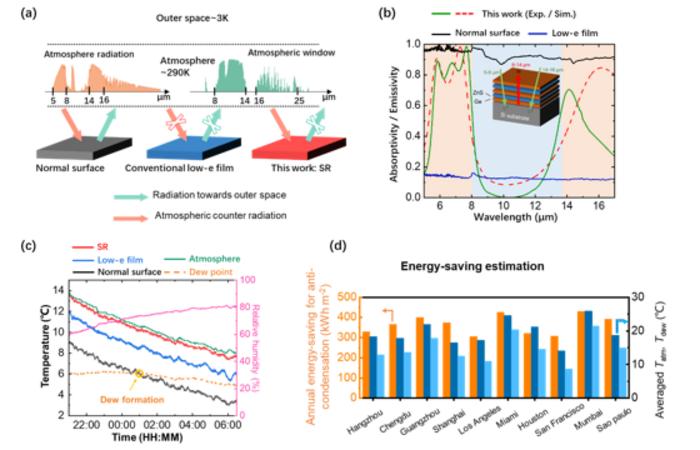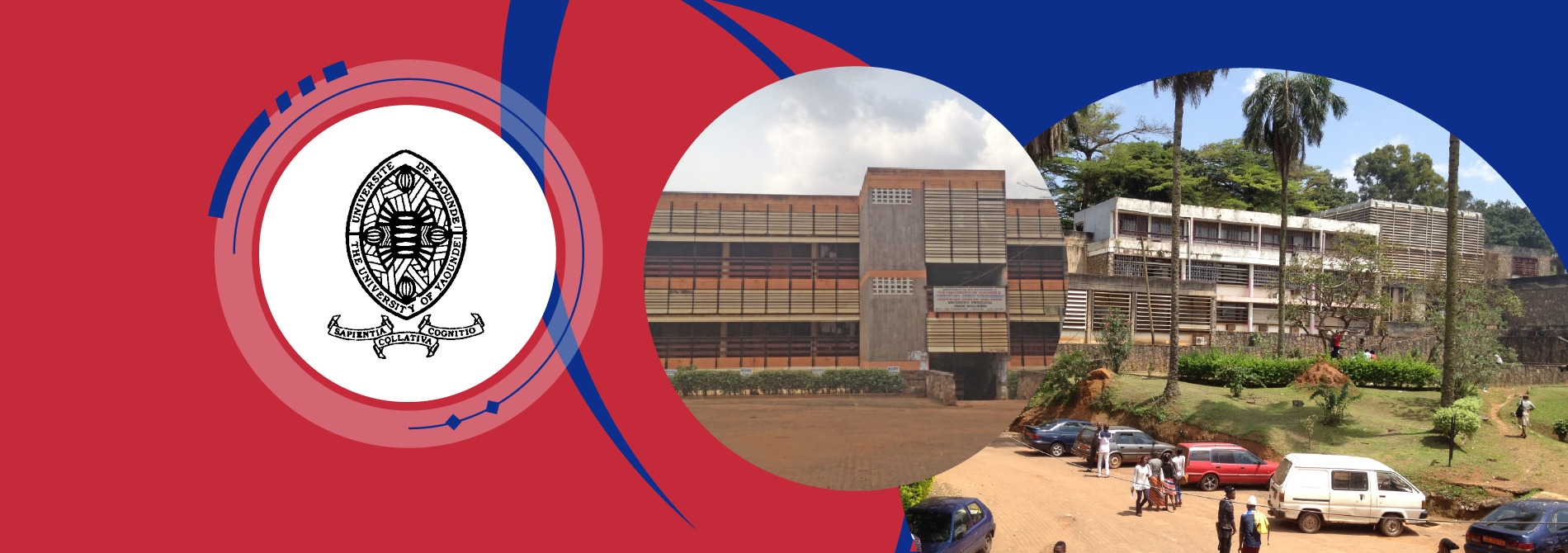
(a) Schematic diagram of the radiative heat exchange among the atmosphere, the outer space, and the surfaces. (b) Measured absorptivity / emissivity. (c) Real-time temperature in thermal test. (d) Calculated annual energy-saving for anti-condensation of 10 cities in various climate zones.
CREDIT: by Yining Zhu, Yiwei Zhou, Bing Qin, Rui Qin, Min Qiu, and Qiang Li
Warming has played a crucial role in various industrial and agricultural processes throughout history. Night-time warming, however, presents a distinct challenge due to the absence of solar radiation. During the night, direct radiative heat loss to outer space through the atmospheric transparent window (8-14 ?m) can cause temperature to drop below freezing, posing significant threats to agriculture (crops), transportation (outdoor cables), and more.
Traditionally, achieving night-time warming relied on active electric heaters, which contribute to significant energy consumption and increased carbon emissions. Passive warming methods, including insulating blankets (reducing heat conduction) and low-emissivity films (reducing heat radiation), come with limitations, such as suboptimal effectiveness and overall positive net heat loss.
Air, known for its high heat capacity, can maintain relatively higher temperatures compared to the ground during the night, potentially serving as an external heat source. To harness energy from the entire atmosphere above the Earth’s surface, radiative methods are needed.
In a new paper published in Light Science & Application, a team of scientists, led by Professor Qiang Li from Zhejiang University, China, proposed a night-time radiative warming strategy based on nanophotonic control. This strategy passively suppresses the thermal radiation of objects in the atmospheric transparent window (8-14 ?m) while actively utilizing energy in the atmospheric radiation bands (5-8 ?m and 14-16 ?m). Achieving this strategy involves covering the target surface with a selective reflective (SR) thin film that exhibits high reflectance in the atmospheric transparent band and high absorptivity in the atmospheric radiation bands, to control radiative energy flow and effectively raising the target temperature.
Researchers designed and fabricated the device using a broadband infrared-absorbing substrate combined with germanium and zinc sulfide one-dimensional photonic crystal films. The device achieved a reflectance of 0.91 in the atmospheric transparent window and an absorptivity of 0.7 in the atmospheric radiative bands. Then, outdoor thermal testing was conducted, revealing that by covering SR film, the target’s temperature increased by 2.1°C/4.4°C compared to a broadband reflective (low-e) surface and a broadband absorptive surface, respectively.
The study also assessed the potential application of this night-time warming strategy in cities with different climates, demonstrating that the annual electricity savings could surpass 300 kWh m-2 across different climate zones.
Original Article: Night-time radiative warming using the atmosphere
More from: Changchun Institute of Optics Fine Mechanics and Physics | Zhejiang University
The Latest Updates from Bing News
Go deeper with Bing News on:
Night-time radiative warming
- Across the universe, dark matter annihilation could be warming up dead stars
"The capture and annihilation of dark matter in neutron stars would provide a source of heating that stops the star from getting really cold." ...
- Space Umbrellas, Ultra-White Paint, and More Shocking Ideas That Could Actually Help Save the Earth From Climate Change
Scientists from MIT, Stanford, and Harvard are on the cutting edge of what may be game-changing innovations for our warming planet ...
- NASA has a plan to clean up space junk—but is going green enough?
Astronomers laud NASA's plan to protect the space environment, but the agency needs to act fast to make a difference.
- Think red-hot heat’s bad? Just wait until code magenta.
Forget about red hot. A new color-coded heat warning system relies on magenta to alert Americans to the most dangerous conditions they may see this summer.
- US implements new color-coded system to warn Americans about heat danger
A new color-coded heat warning system was introduced by the National Weather Service and the Centers for Disease Control and Prevention on Earth Day, officials say.
Go deeper with Bing News on:
Night-time warming strategy
- Southwest Airlines considering changes to its quirky boarding, pick-your-own seating practices
Get ready for changes in boarding and pick-your-own seating at Southwest Airlines. Here’s what travelers might see this fall.
- Jury finds Wisconsin man guilty in killing, sexual assault of 20-month-old girl
A Wisconsin man has been convicted in the sexual assault and killing of a 20-month-old girl and abusing the child’s mother who then was his girlfriend. A jury on Friday ...
- Arrest warrant issued for man in fatal shooting of off-duty Chicago police officer
An arrest warrant has been issued for a 22-year-old man in the fatal shooting of a Chicago police officer who was heading home from work.
- North Dakota's paddlefish snagging season starts Wednesday
North Dakota's paddlefish snagging season opens Wednesday with the beginning of May. The season is scheduled to continue through May 21, though it's often closed early to preserve the resource. Last ...
- Dangerous storms expected Saturday night around Tulsa
Large hail, flooding, and tornadoes are very real threats Saturday night across eastern Oklahoma. Concerns over salmonella in chicken; FCC restores net neutrality; quarterbacks selected early in NFL ...









